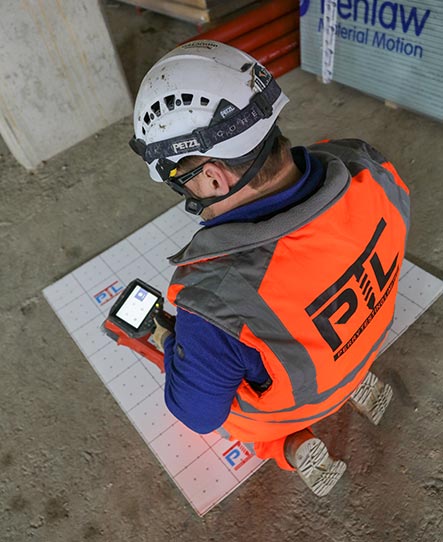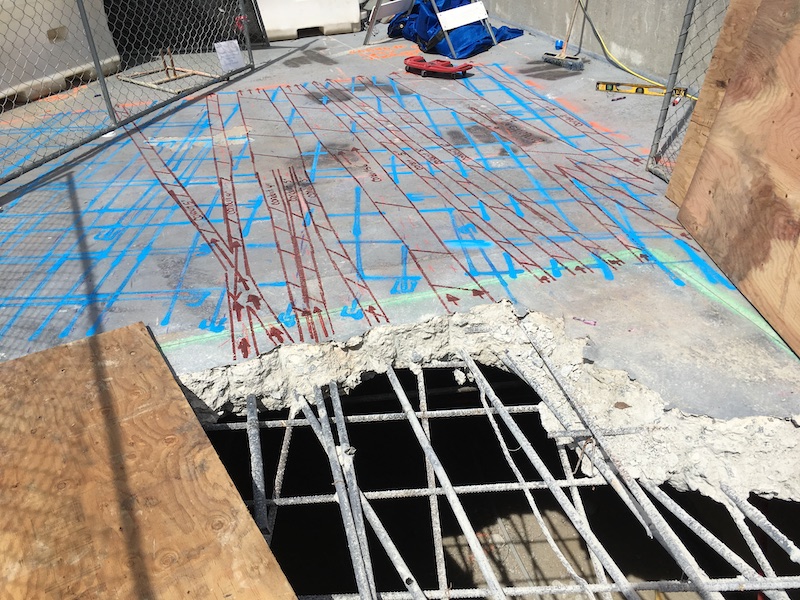Improve Your Task with RainierGPR Concrete Scanning Services
Improve Your Task with RainierGPR Concrete Scanning Services
Blog Article
Checking Out the Secret Benefits of Concrete Scanning in Construction Projects
In the world of contemporary construction practices, the application of concrete scanning innovation has become a critical tool for making certain job performance and structural integrity. From improving safety actions to precisely discovering utilities concealed underneath the surface, the benefits of concrete scanning are complex. The ability to enhance project timelines and minimize costs while maintaining existing frameworks is a testament to the value this modern technology gives the building and construction market. As we explore the nuanced benefits of concrete scanning, it comes to be evident that its effect extends far past surface-level assessments, providing a glance into the complex internet of advantages waiting to be discovered.
Boosted Safety Procedures
Making use of innovative concrete scanning technology enhances precaution on building and construction sites by offering precise discovery of prospective dangers concealed underneath the surface. This innovation enables building groups to recognize rebar, avenues, post-tension wires, and various other blockages prior to excavation or boring, dramatically reducing the threat of crashes. By pinpointing these aspects exactly, employees can prevent harmful essential structural components, hence protecting against injuries, delays, and costly repair services.
In addition, concrete scanning plays a crucial function in making certain the stability of existing structures during renovations or growths. By detecting weak points, voids, or degeneration within concrete elements, designers can deal with these issues proactively, boosting the general safety and security and durability of the building. This aggressive method not just reduces the threat of structural failings but additionally minimizes the possibility for accidents brought on by unforeseen architectural shortages.
In essence, the execution of concrete scanning technology works as a proactive security measure that safeguards both building employees and the architectural stability of structures, inevitably adding to the general success and performance of construction tasks. - RainierGPR Concrete Scanning
Accurate Detection of Utilities
Concrete scanning modern technology assists in precise recognition of below ground utilities, improving building site safety and effectiveness. Precise detection of energies is critical in building tasks to avoid pricey problems, task delays, and most notably, make sure the safety and security of workers and the general public. By using innovative scanning modern technologies such as ground-penetrating radar (GPR) and electromagnetic induction, construction teams can map out the place of buried pipes, cable televisions, and other utilities with high levels of accuracy.

Time and Price Performance

Concrete scanning modern technology allows building and construction teams to precisely find rebar, post-tension wires, and other embedded things within concrete structures. This accurate info aids in staying clear of costly mistakes such as unintentional damage to important components throughout drilling, cutting, or coring activities. Additionally, by determining prospective dangers in advance, the requirement for costly repair services or revamp as a result of problems can be decreased, bring about set you back financial savings for the project.
Furthermore, the capability to quickly and precisely discover utilities underneath the surface without triggering any type of damage not only conserves time yet additionally protects against pricey disturbances to existing facilities. Generally, the time and cost efficiency advantages of concrete scanning make it an invaluable device for boosting building job management and implementation.
Conservation of Structural Integrity
Maintaining the architectural stability of buildings and framework is vital in guaranteeing long-term security and security. Concrete scanning plays an important role in this conservation process by allowing building and construction experts to determine potential threats to the architectural published here integrity of a structure or facilities before they intensify into significant problems. Via the use of innovative scanning innovations such as ground-penetrating Visit Your URL radar (GPR) and electromagnetic induction, building and construction teams can non-invasively analyze the condition of concrete frameworks, find rebar, post-tension wires, and other ingrained aspects, and recognize any gaps, cracks, or damage within the concrete.
Improved Project Planning
In order to make certain the effective execution of construction projects, thorough interest to detail and extensive planning are essential parts that stem from a thorough understanding of the architectural conditions identified via concrete scanning. Eventually, incorporating concrete scanning right into the job planning stage improves coordination amongst group members, cultivates positive problem-solving, and adds to the successful delivery of building and construction jobs within budget and routine constraints.
Verdict
Finally, concrete scanning provides countless advantages in construction tasks. By improving precaution, properly identifying energies, boosting time and expense efficiency, protecting structural honesty, and helping in project preparation, concrete scanning proves to be a crucial tool for effective project implementation. Its capacity to reduce threats, enhance performance, and make sure task integrity makes it see this website an essential property for construction experts.
In the world of modern building techniques, the utilization of concrete scanning innovation has actually arised as a pivotal tool for making certain project efficiency and structural integrity.Concrete scanning technology enables building and construction teams to accurately find rebar, post-tension cords, and various other ingrained objects within concrete structures. Through the use of sophisticated scanning modern technologies such as ground-penetrating radar (GPR) and electro-magnetic induction, construction teams can non-invasively evaluate the condition of concrete structures, find rebar, post-tension cords, and various other ingrained aspects, and recognize any kind of gaps, splits, or damage within the concrete.
In order to ensure the successful implementation of construction jobs, careful interest to detail and complete preparation are necessary elements that stem from a detailed understanding of the structural conditions identified through concrete scanning. Inevitably, including concrete scanning right into the job planning phase improves sychronisation among team participants, cultivates positive analytical, and contributes to the effective distribution of building jobs within budget and timetable restraints.
Report this page